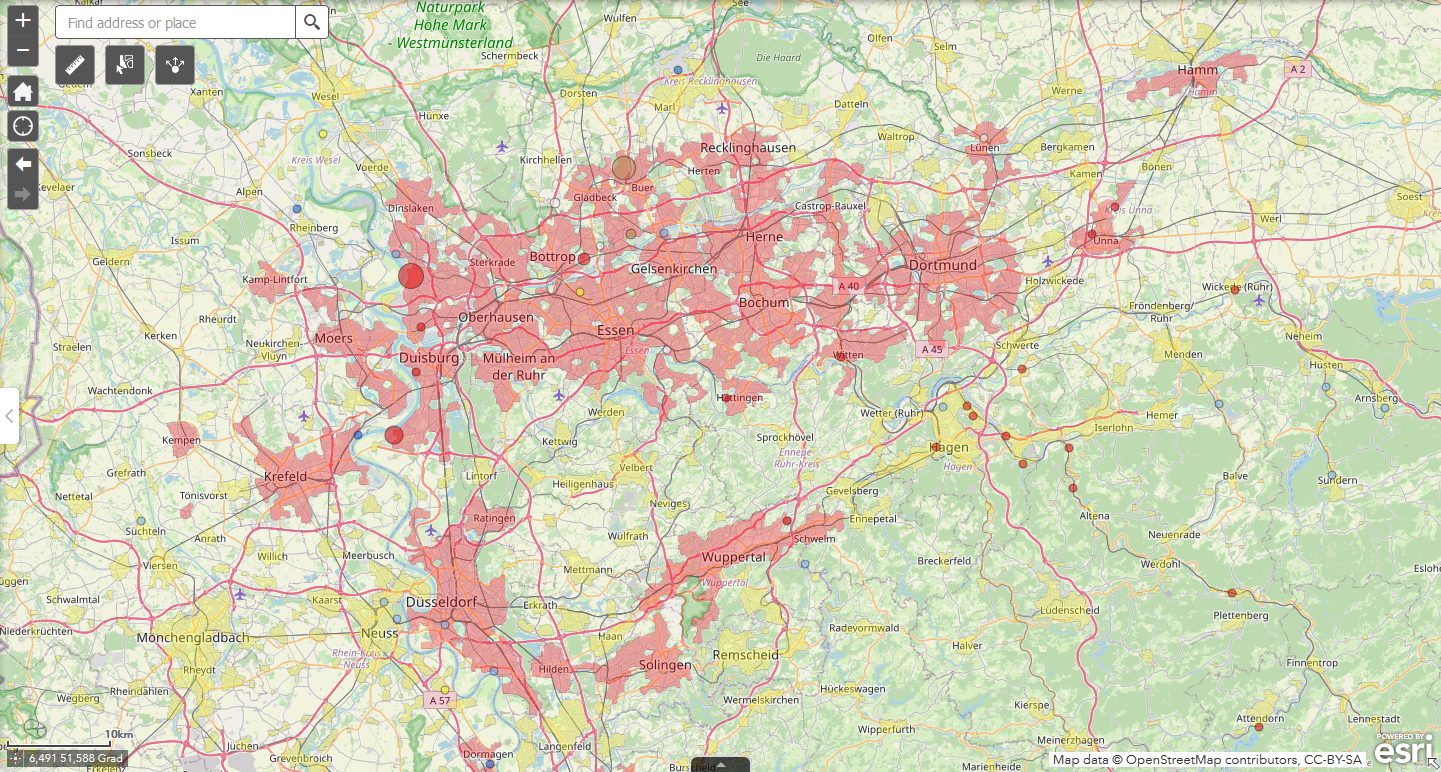Industrial excess heat for district heating: Database shows great potential for supplying households
Excess heat from energy-intensive industries is often suitable for use in district heating systems but is usually unutilized. A detailed overview of the potentials available in the EU is now provided by a database of the sEEnergies project. In Germany, 29 petajoules of excess heat from industrial sites could be used, which corresponds to the demand of more than half a million households. Among other things, this could replace the coal- and gas-fired power plants typically utilized for district heating. The information is available as maps and downloadable datasets.
In the EU project sEEnergies, a consortium of universities and research institutes is developing a holistic modelling approach to quantify the potential for energy efficiency in buildings, transport and industry throughout the EU and to make this knowledge exploitable.
One possibility for the efficient and low-carbon heat supply of buildings is the use of industrial excess heat in district heating systems. Energy-intensive industrial sites in the chemical, iron and steel, cement, glass, paper and refinery sectors have a lot of excess heat, mainly through flue gases, but at present this heat is rarely used.
The consortium has linked four databases in order to assess and visualize this hitherto mostly unused potential throughout Europe. Fraunhofer Institute for Systems and Innovation Research ISI, as project partner, has used a new methodology to determine the excess heat potential. For this purpose, the project team has created a database of 1,608 industrial sites. In this database, the locations are compared as heat sources with data on heat demand and existing and maximum possible district heating networks in a geographic information system (GIS). The data obtained is available as a map view and the datasets can be downloaded.
This first-time linking of EU-wide databases and the geographical representation show: In Germany, 29 petajoules (PJ) and in Europe 151 PJ – and thus more than 35 percent of industrial excess heat in each case – are available at a maximum distance of ten kilometers from existing district heating systems and could thus be fed into the district heating systems. With a final energy consumption of district heating of 1,945 PJ in the European Union, eight percent of today's district heating demand throughout the EU, respectively seven percent in Germany, could thus be covered by excess heat sources from energy-intensive industries.
Project leader Pia Manz from Fraunhofer ISI summarizes: “These results show that industrial excess heat could already make a major contribution to a more efficient heat supply. The city of Karlsruhe, for example, shows how this can be achieved: Since 2010, surplus excess heat from the nearby refinery has been fed into the district heating system, supplying heat to around 32,000 households. However, this is still a rare example in Germany and Europe.”
Excess heat is central for future efficient heat supply
Additional similar synergies can be identified with the help of the calculated potentials and the spatial analysis. In the Ruhr Area, for example, as a densely populated region characterized by industry, the potentials are particularly high: Large amounts of industrial excess heat could be integrated, while the existing district heating networks could be expanded cost-efficiently.

Pia Manz emphasizes: “The ambitious expansion of efficient district heating networks and the connection of industrial excess heat sources to district heating systems should be central elements in the transition to a sustainable and CO2-neutral heat supply in Europe. To this end, obstacles must be removed, for example, by providing market access to heating networks for third parties and securing long-term supply contracts through financial coverage of downtimes. However, industrial excess heat alone will not suffice: The main source of district heating in the future has to be renewable energies, in combination with large heat pumps and decentralized heat pumps.”
Further information
- Maps for industrial sites and district heating systems
- Download datasets
- Press release sEEnergies: Excess heat potentials of industrial sites in Europe
- Report: Excess heat potentials of industrial sites in Europe. Documentation on excess heat potentials of industrial sites including open data file with selected potentials
The Fraunhofer Institute for Systems and Innovation Research ISI analyzes the origins and impacts of innovations. We research the short- and long-term developments of innovation processes and the impacts of new technologies and services on society. On this basis, we are able to provide our clients from industry, politics and science with recommendations for action and perspectives for key decisions. Our expertise is founded on our scientific competence as well as an interdisciplinary and systemic research approach.